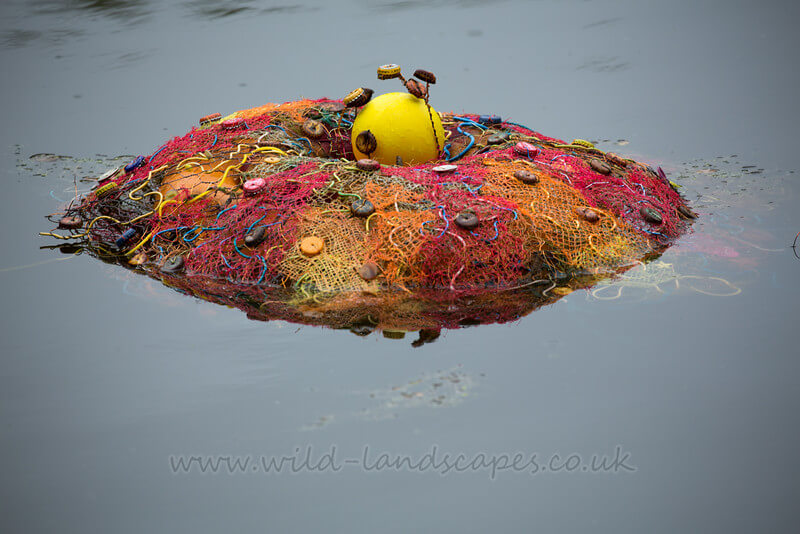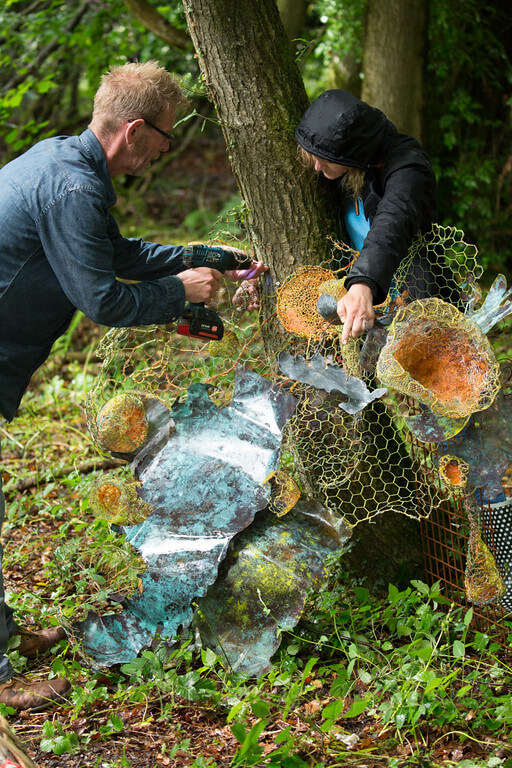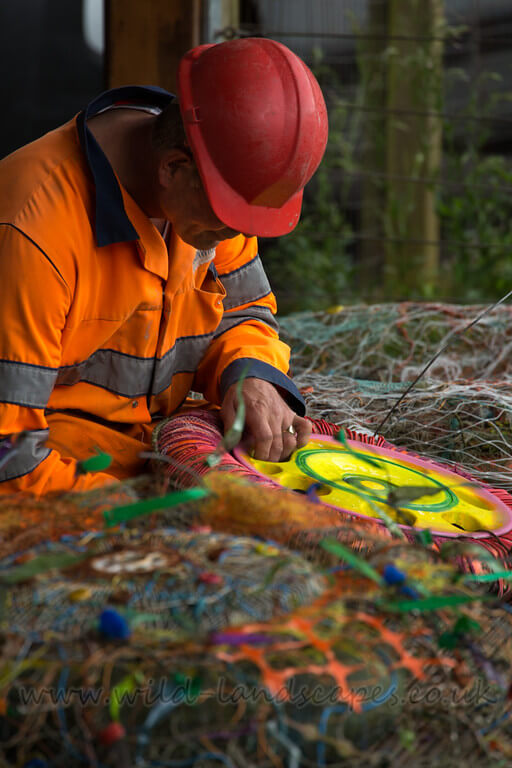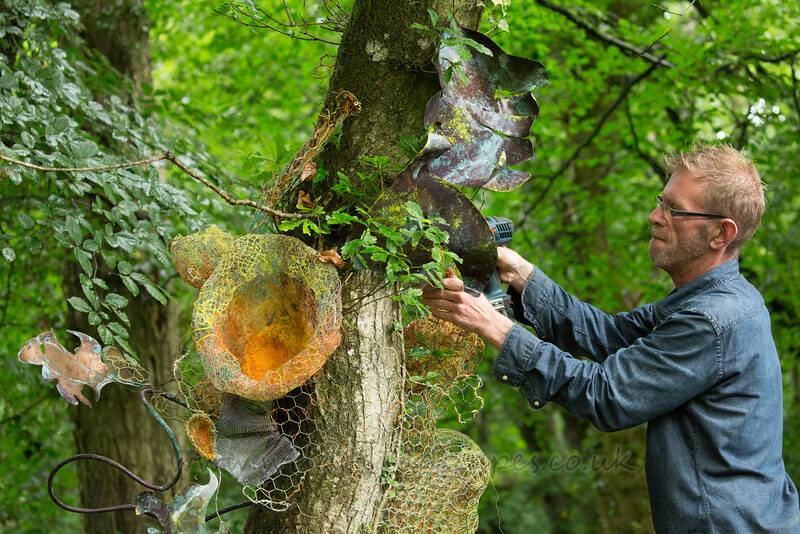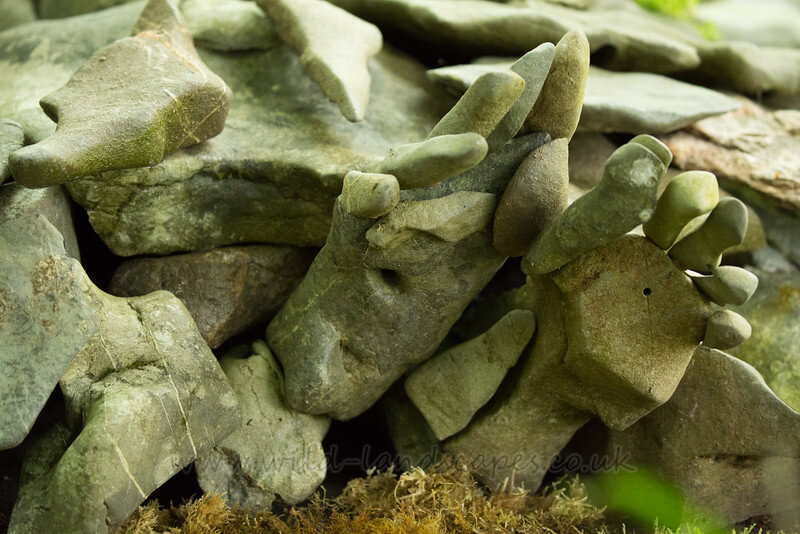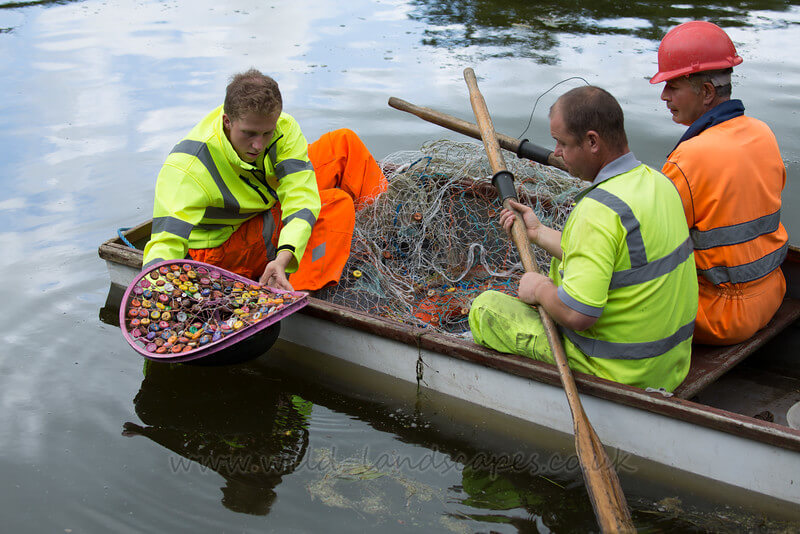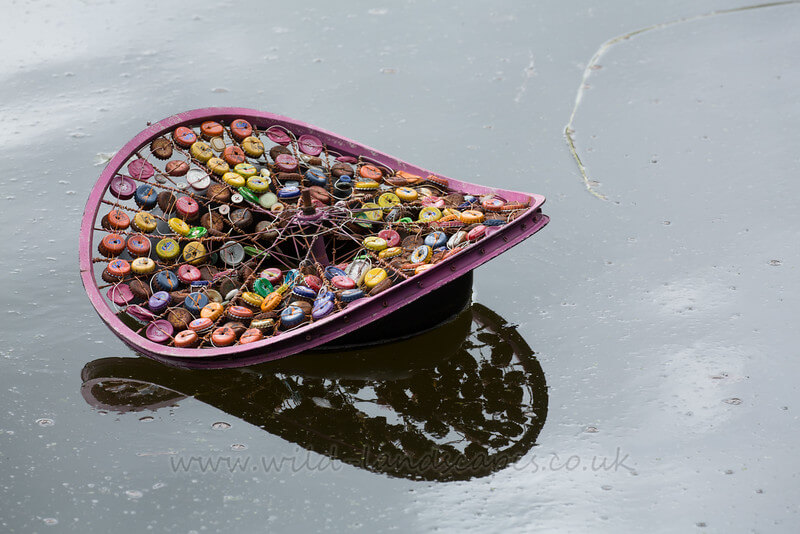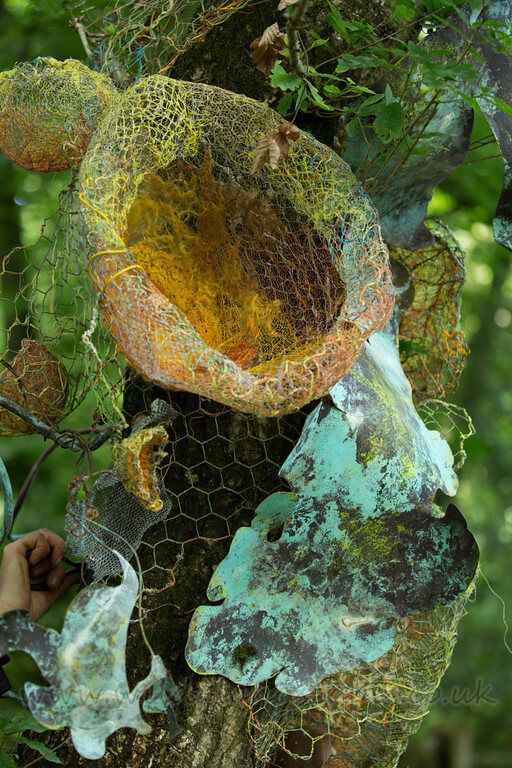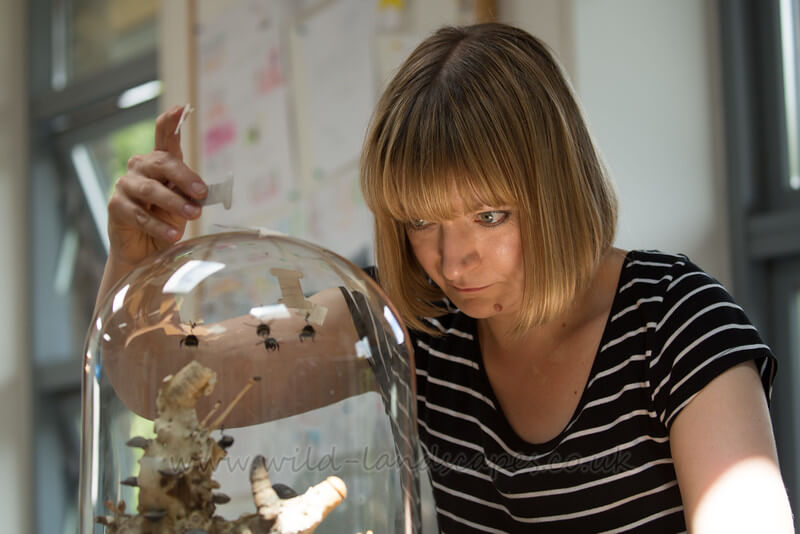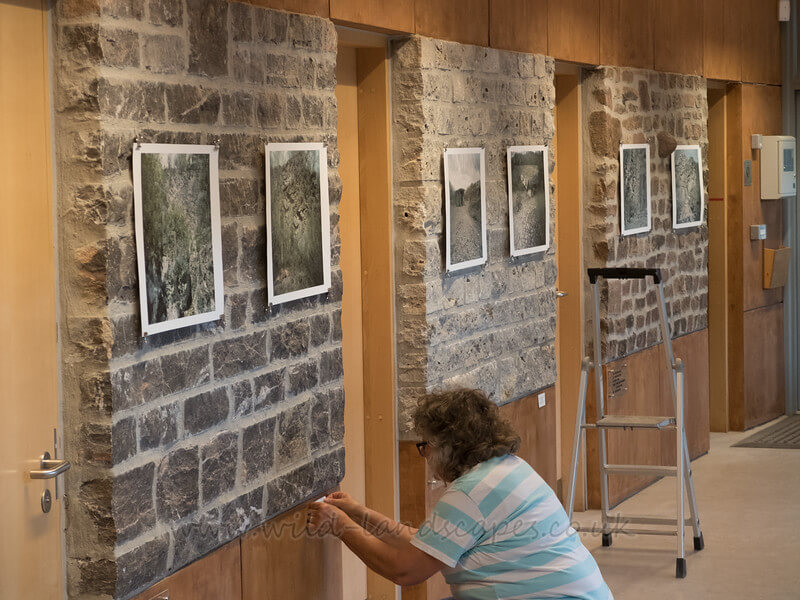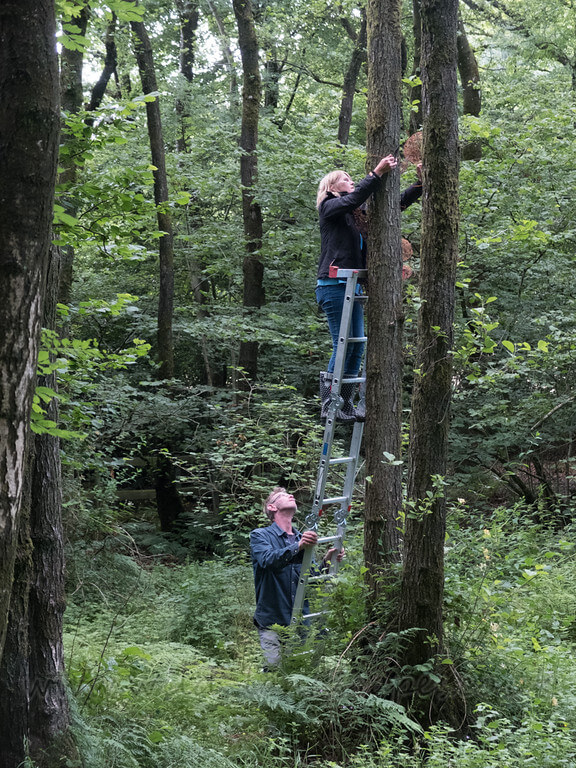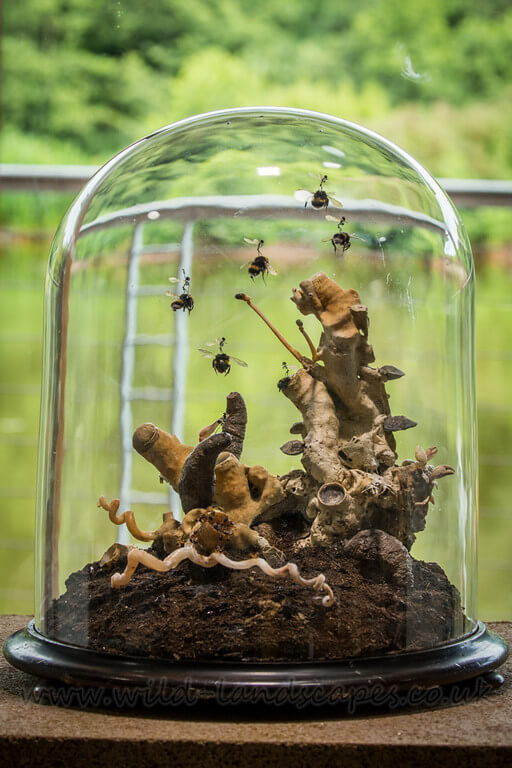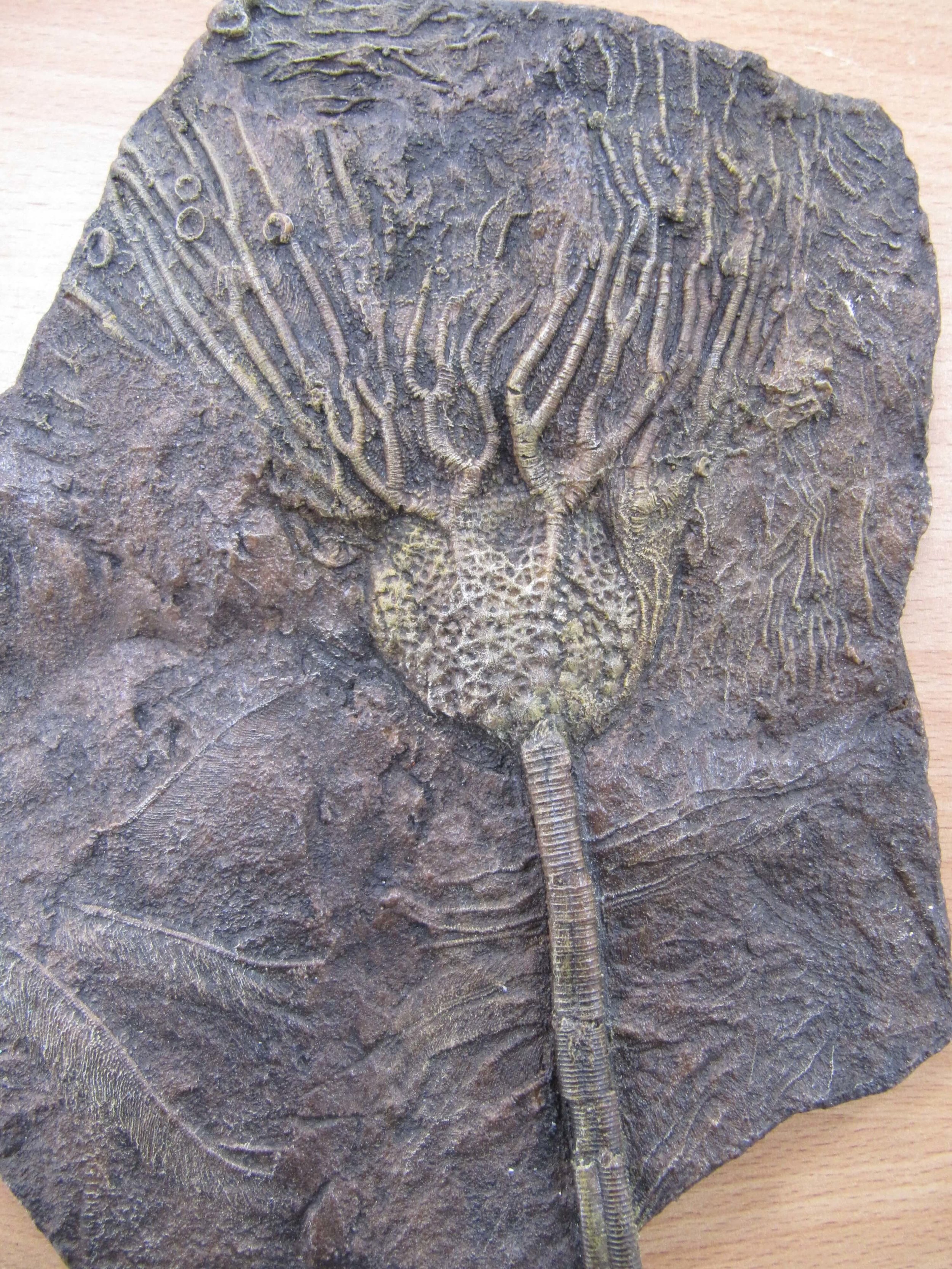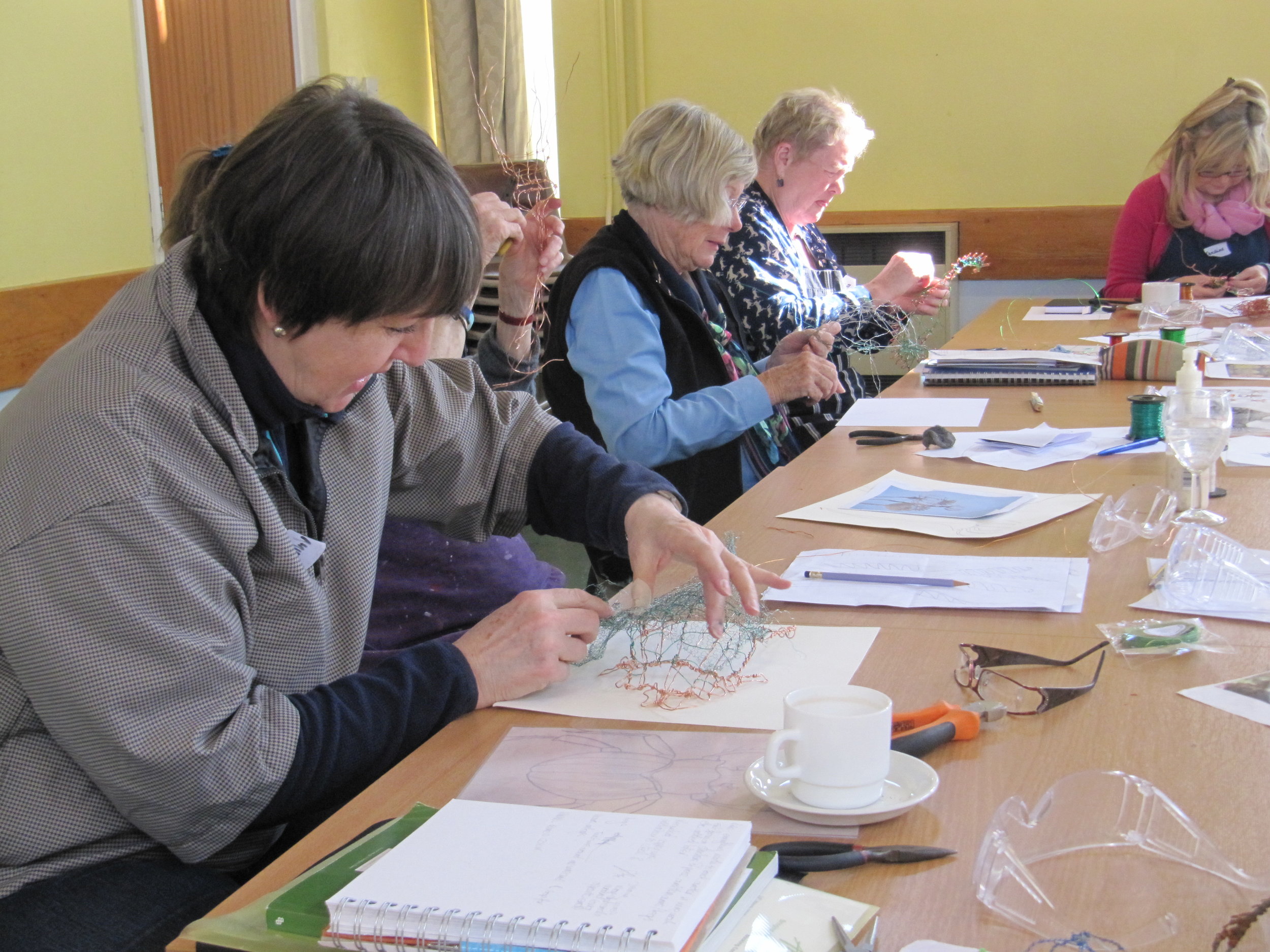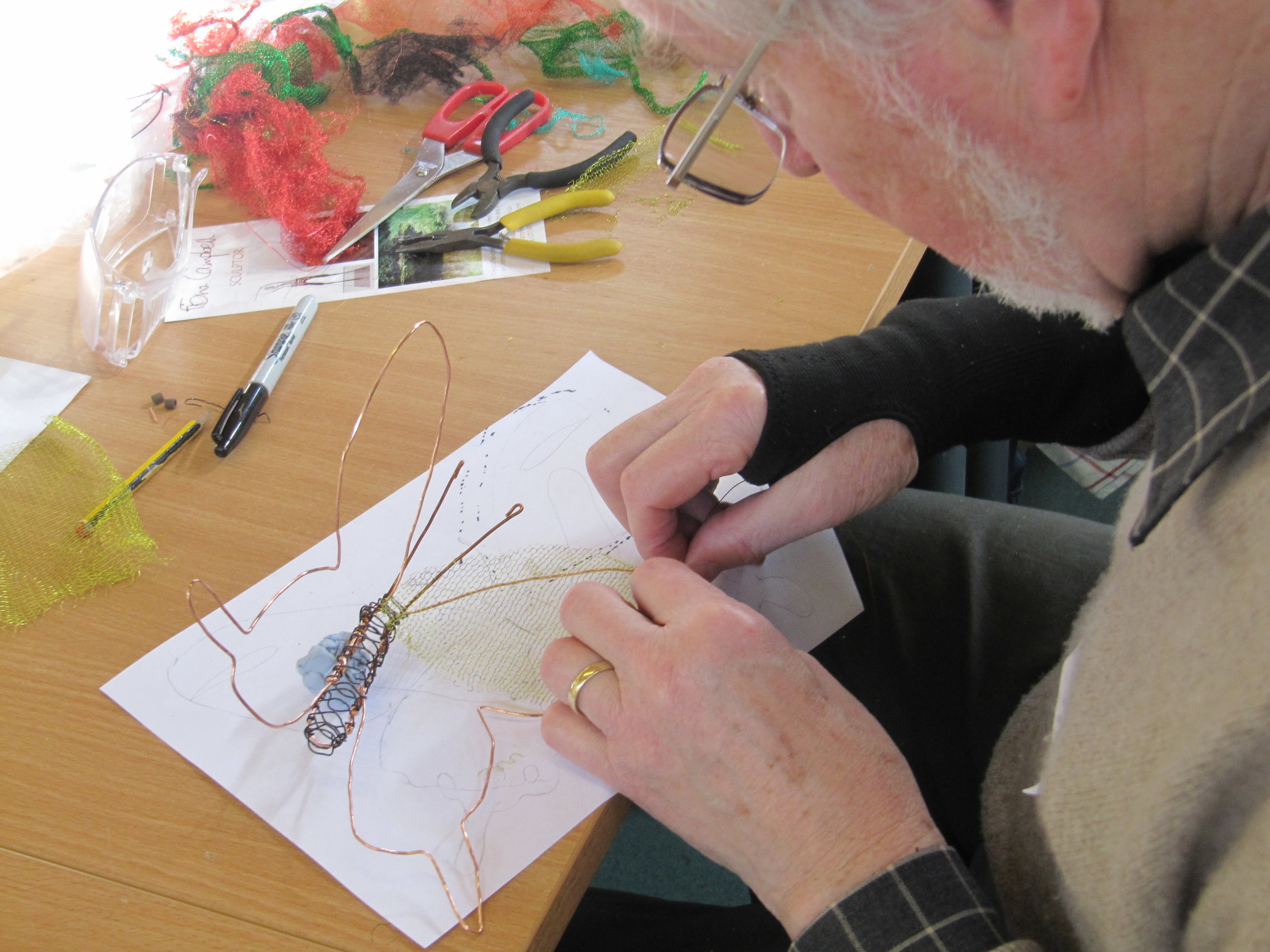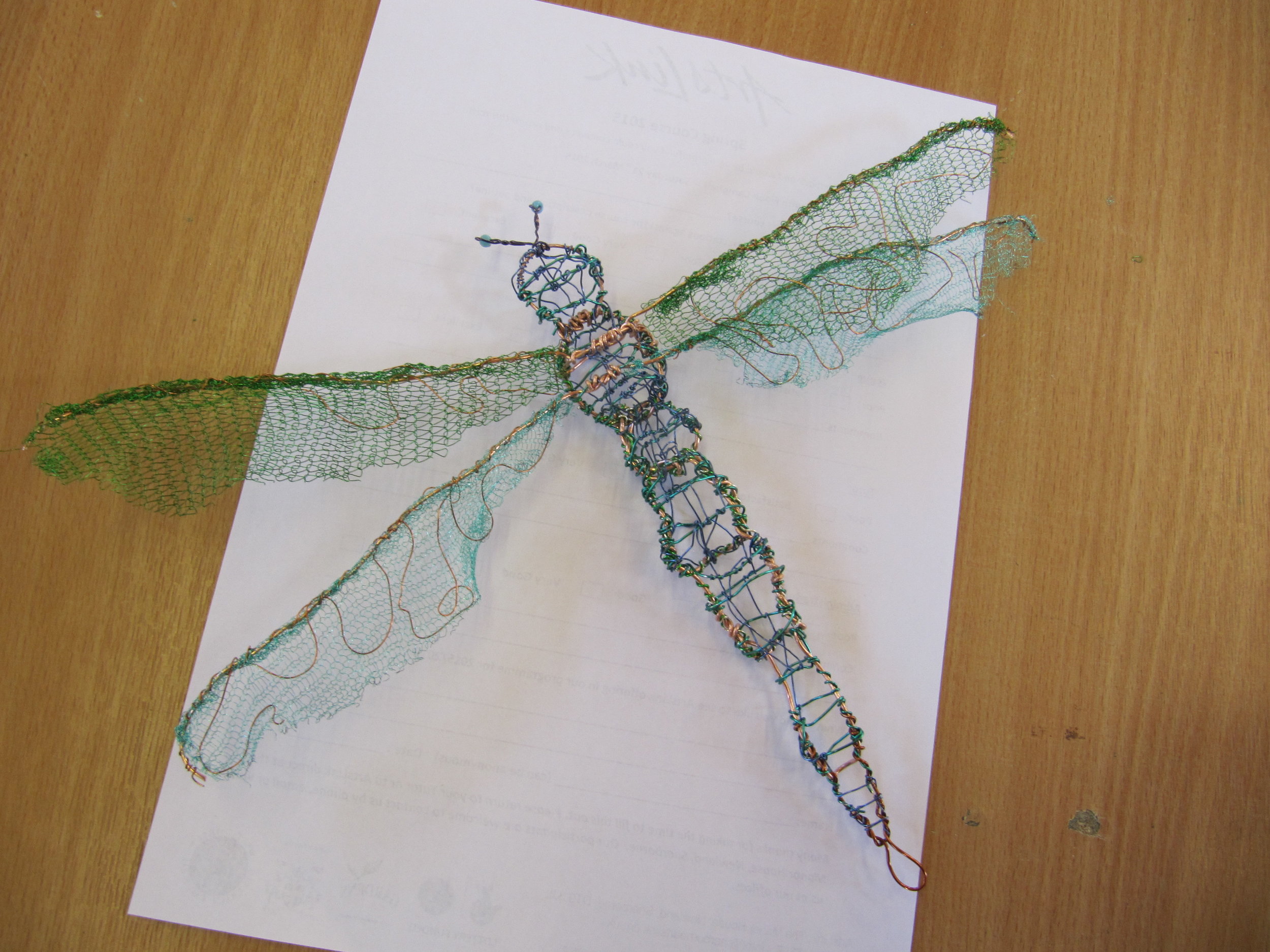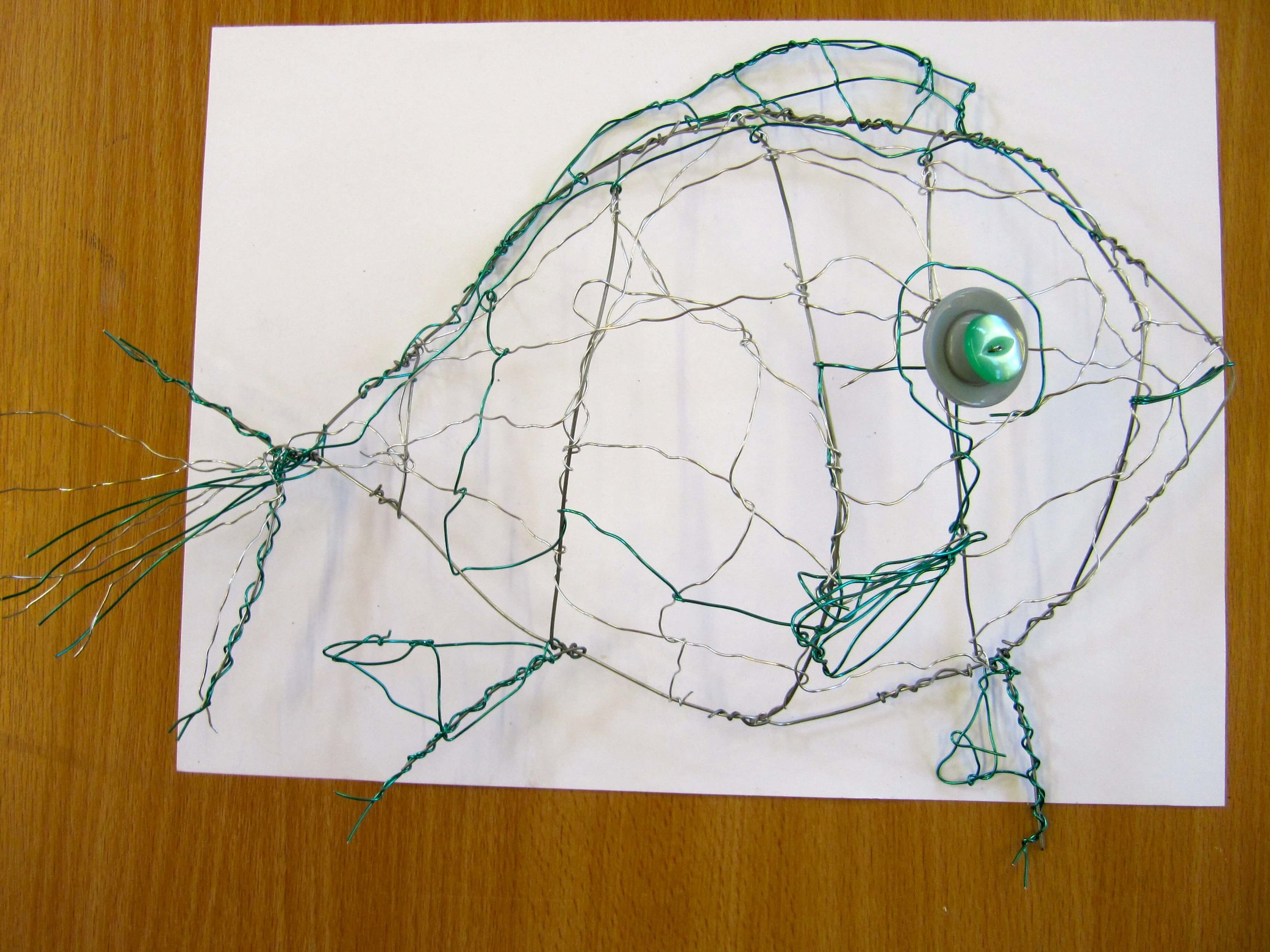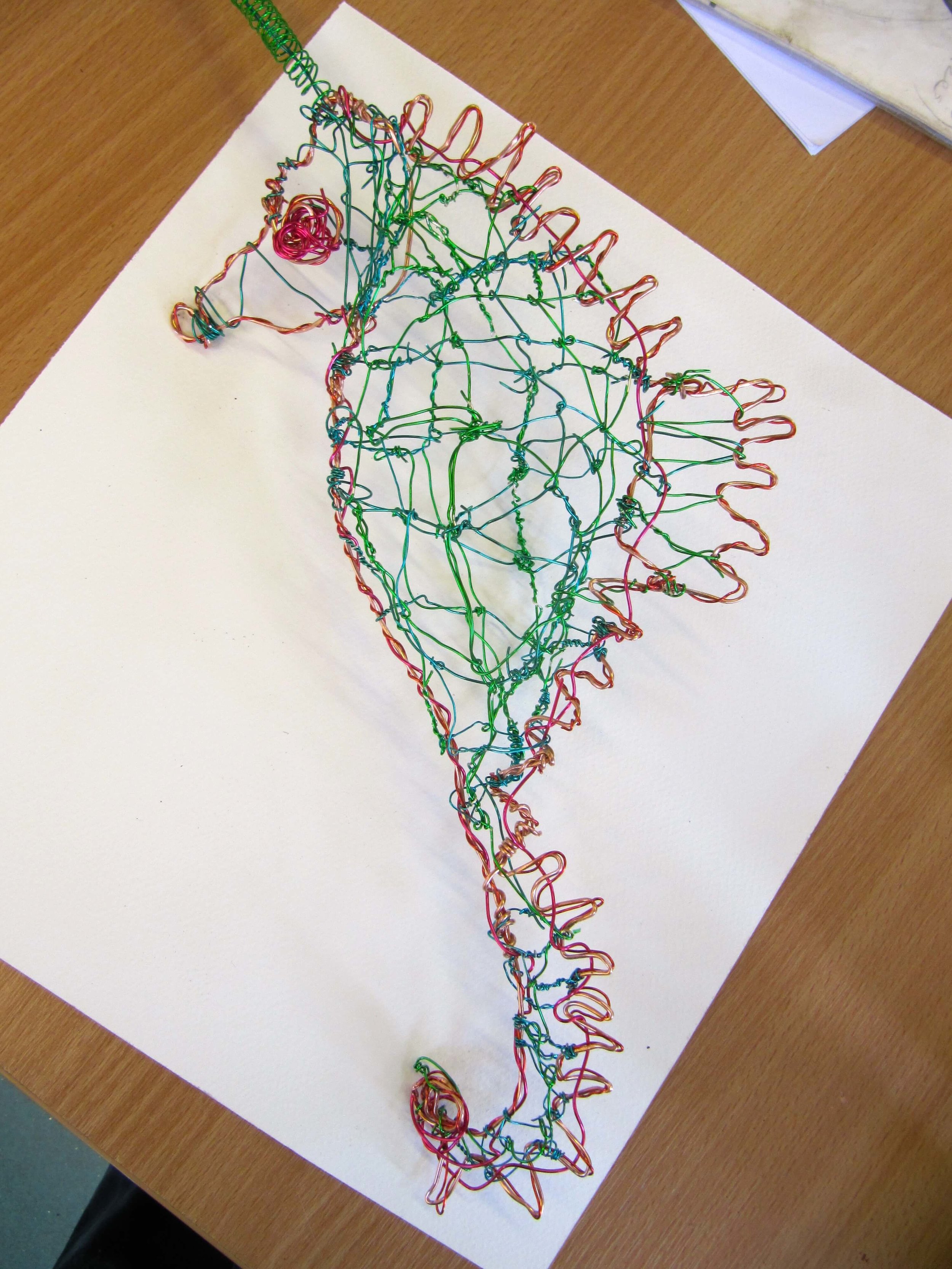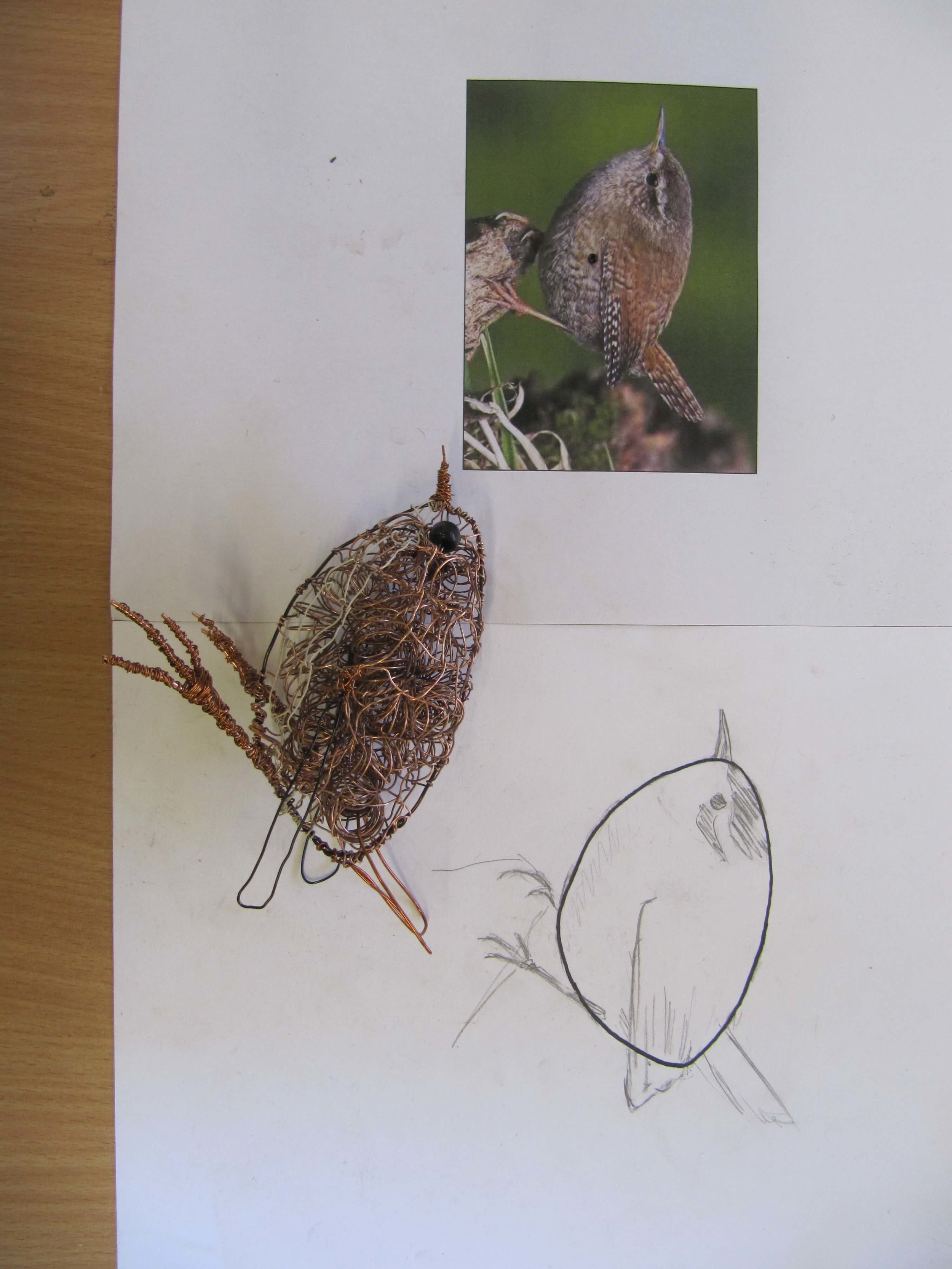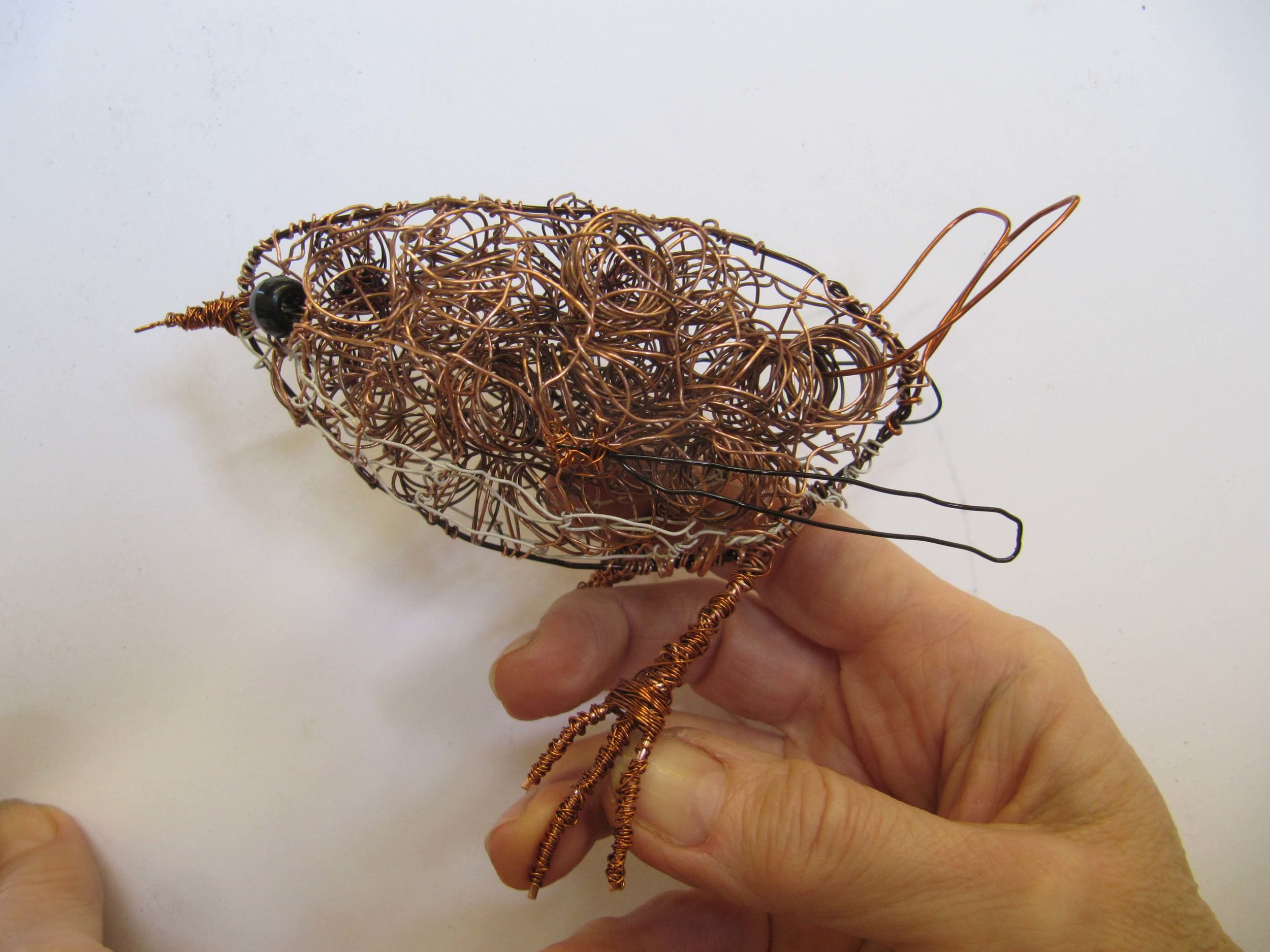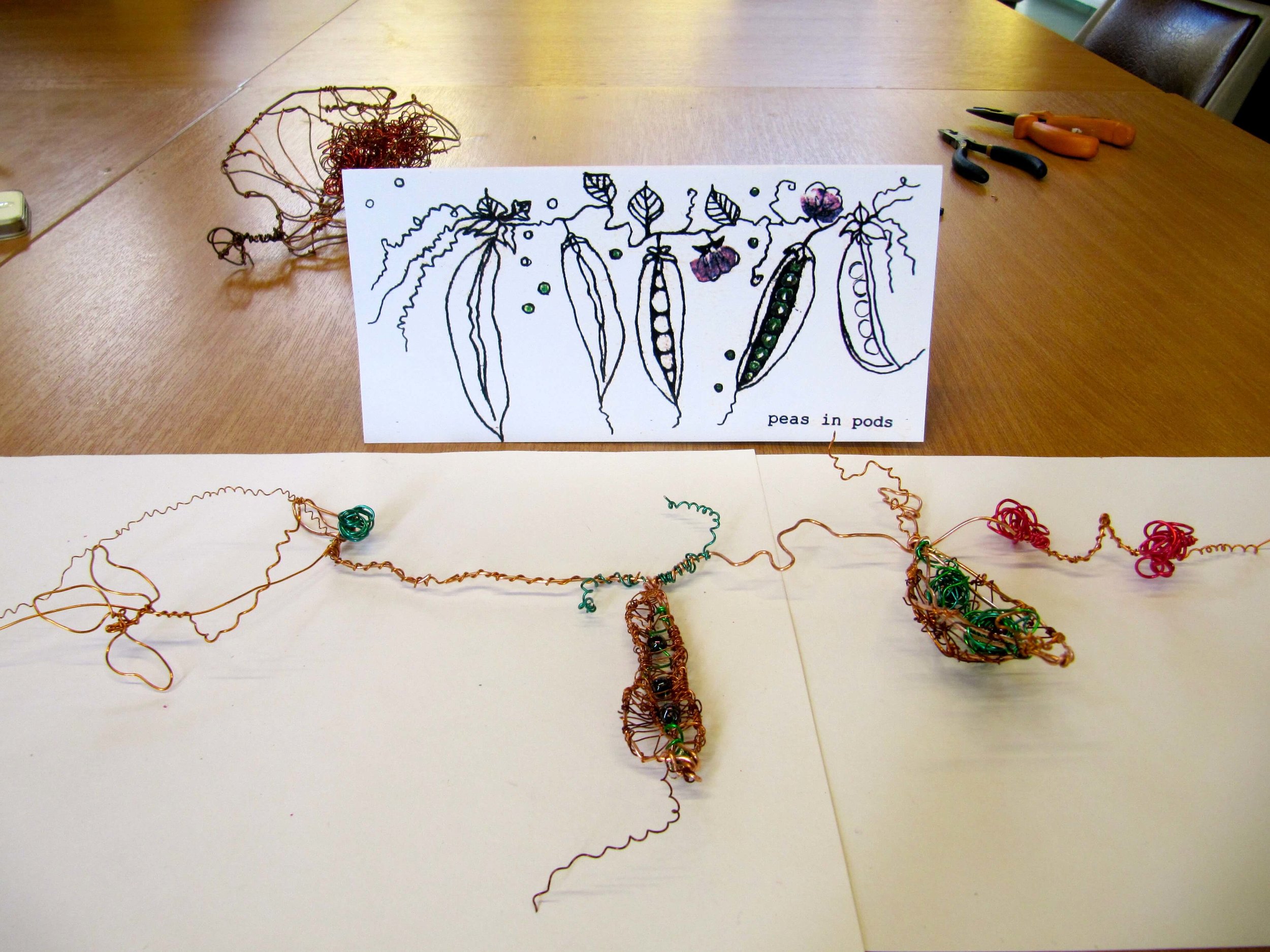June flew by for me with a host of projects on the go in tandem, allowing only snatched moments in our fantastic tropical weather – one of the best summers I’ve known in UK. Art in the community
I spent 4 days with PRU teenagers in a short residency at Bridgwater and Taunton College as part of Somerset Art Works Young ProspectUs Project. We created mutant creatures inspired by insects and sea creatures, experimenting with reclaimed and found materials including aluminium cans, bottle tops, copper pipe, wire, found plastic and metal objects. It was a unique experience, great fun working with the PRU staff and students and hugely rewarding to see the youngsters lose their inhibitions to master skills like soldering. ‘...turning down a mountain biking trip to do a second session soldering metal was what this project is all about: creating great artefacts with a professional artist ... within an environment they felt safe, providing an experience that strengthens their resilience as they move on from school to college’ (Lisa Robertson, Deputy Head of PRU Centre). The work will go on display to Taunton Flower Show in August.











My last project with All Hallows students involved making headdresses for an exhibition ‘All the Fun’ at Silk Mill, Frome. The theme was carnival and circus. I worked with students in Years 4-8, making the sculptures from found, reclaimed and discarded materials, based on endangered wildlife, particularly sea creatures. The project was inspired by the issue of waste, our plastic oceans, and the plight of creatures such as albatrosses and turtles who are suffering from the effects of our rubbish, ‘a stand against plastic pollution so we can see our sea creatures thrive once again’ (Tia West, Year 8). ‘Making my headdress was great fun!’ (Louis Roberts, Year 6).






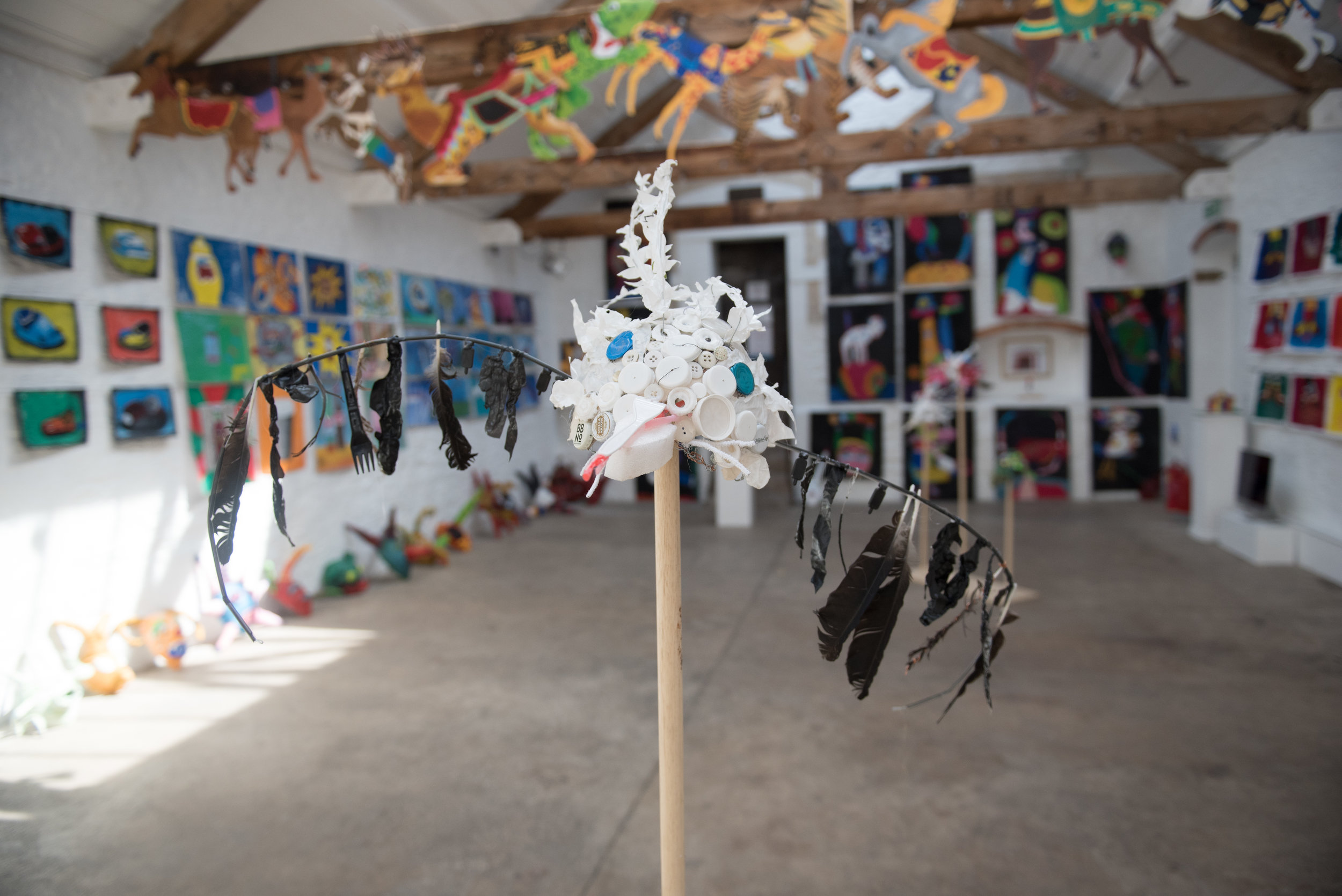
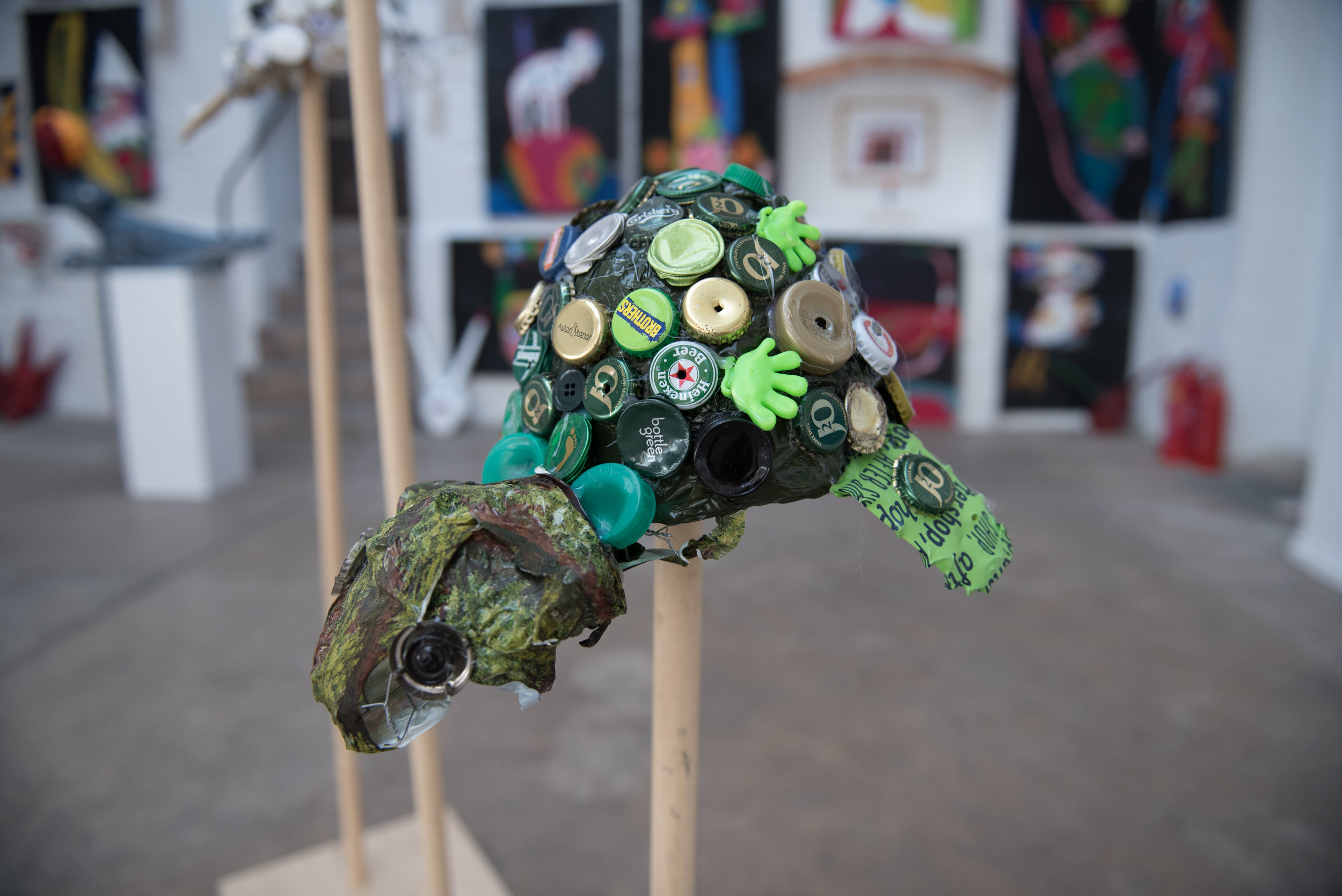
I was involved in a recent Up Late event ‘Drawn to the Museum’ at the Holburne Museum (29/6) - a collaboration with Bath Spa University. The event involved MA students, artists and speakers engaging with the public at the museum. We set up pop up exhibitions of our work, focusing on drawing. I attended an inspiring talk by Tania Kovats who makes drawings, casts trees, and explores water as her subject. I also ran a life drawing session with a clothed model doing quick poses in the grounds, where members of the public and students joined in, it was fun!




I worked with The Rubbish Art Project and members of the Shepton Mallet community making a sheep out of reclaimed steel, chicken wire and various ‘trash’ materials as a community project for the town.







Plans are afoot for a Halloween Harvest Scrap Sculpture Community Project, based on harvest and the cycle of life. I hope to created 3 large-scale metal sculptural works for a public event on Halloween, to be installed at Shepton Mallet market cross. The work may be filmed by a TV series Scrap Kings for Discovery.
Inspiring exhibitions
A couple of intense research trips to London were inspirational. As part of my MA Degree course, a tour de force trip led by Andrea Medjesi-Jones (Bath Spa Uni MA course leader) introduced us to several new galleries including the smart spacious Marian Goodman Gallery. An installation by Leonor Antunes (Portuguese) consisted of suspended ‘wormlike forms’ made of immaculately stitched leather, wrapped rope and brass tubing, interspersed with sculptural glass lights hung close to the ground. The organic linear forms are repeated on both gallery levels, interrupted by reflective screens – all based on work by Anni Albers and Mary Martin. Amongst others we visited Hauser & Wirth, Alison Jacques Gallery (Michelle Stuart: The Nature of Time), Herald Street Gallery and Maureen Paley (Oscar Tuazon: Fire).

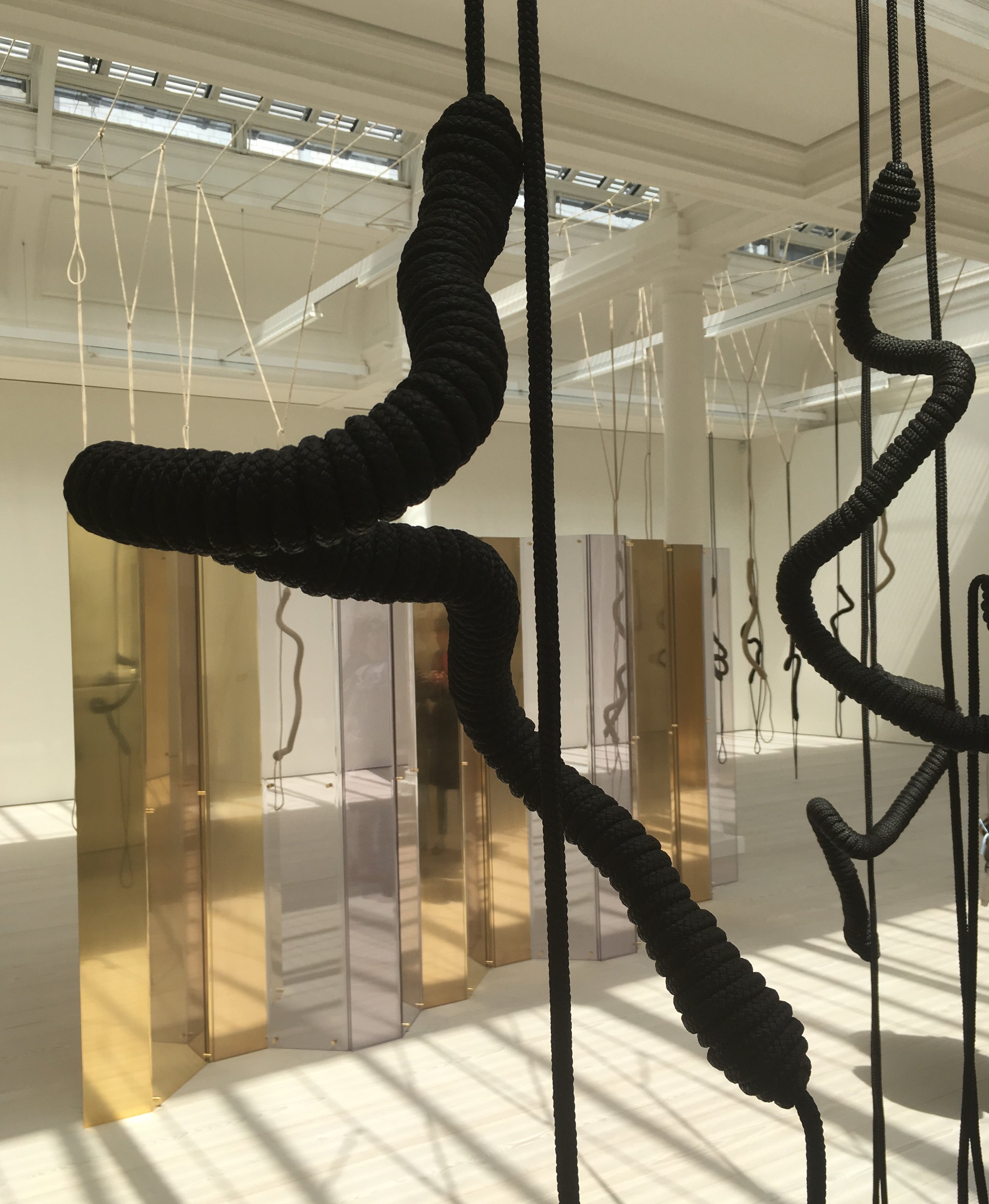


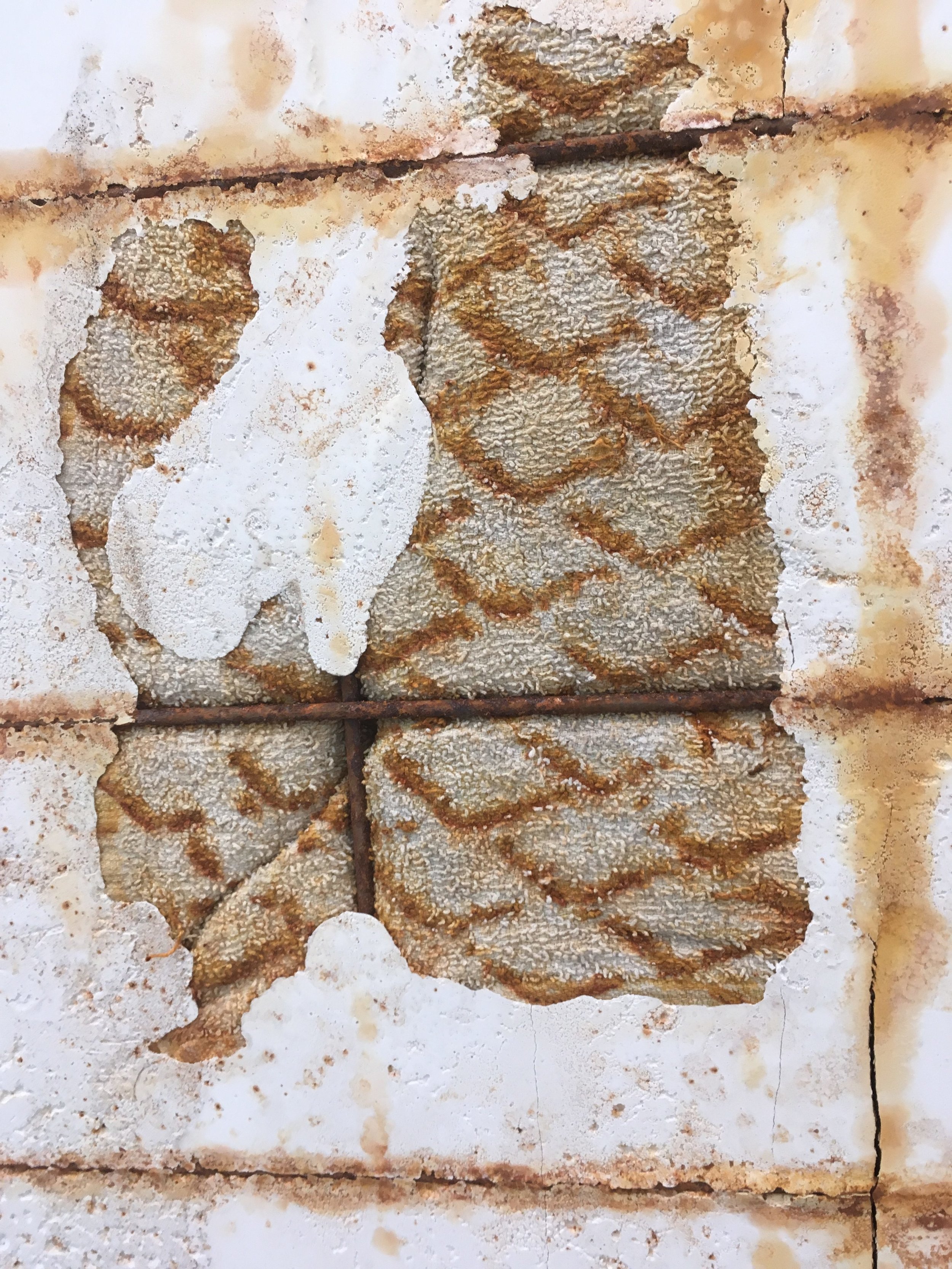
I returned to London to see the results of the Tate Exchange project 'Inventory of Behaviours' at Tate Modern, a project in which I was invited to take part with a set of 'instructions'. While there, I visited Lee Bul's, ‘Crashing’ at the Hayward – a mix of sculpture, installation, sound, film, and performances from the ‘80s.
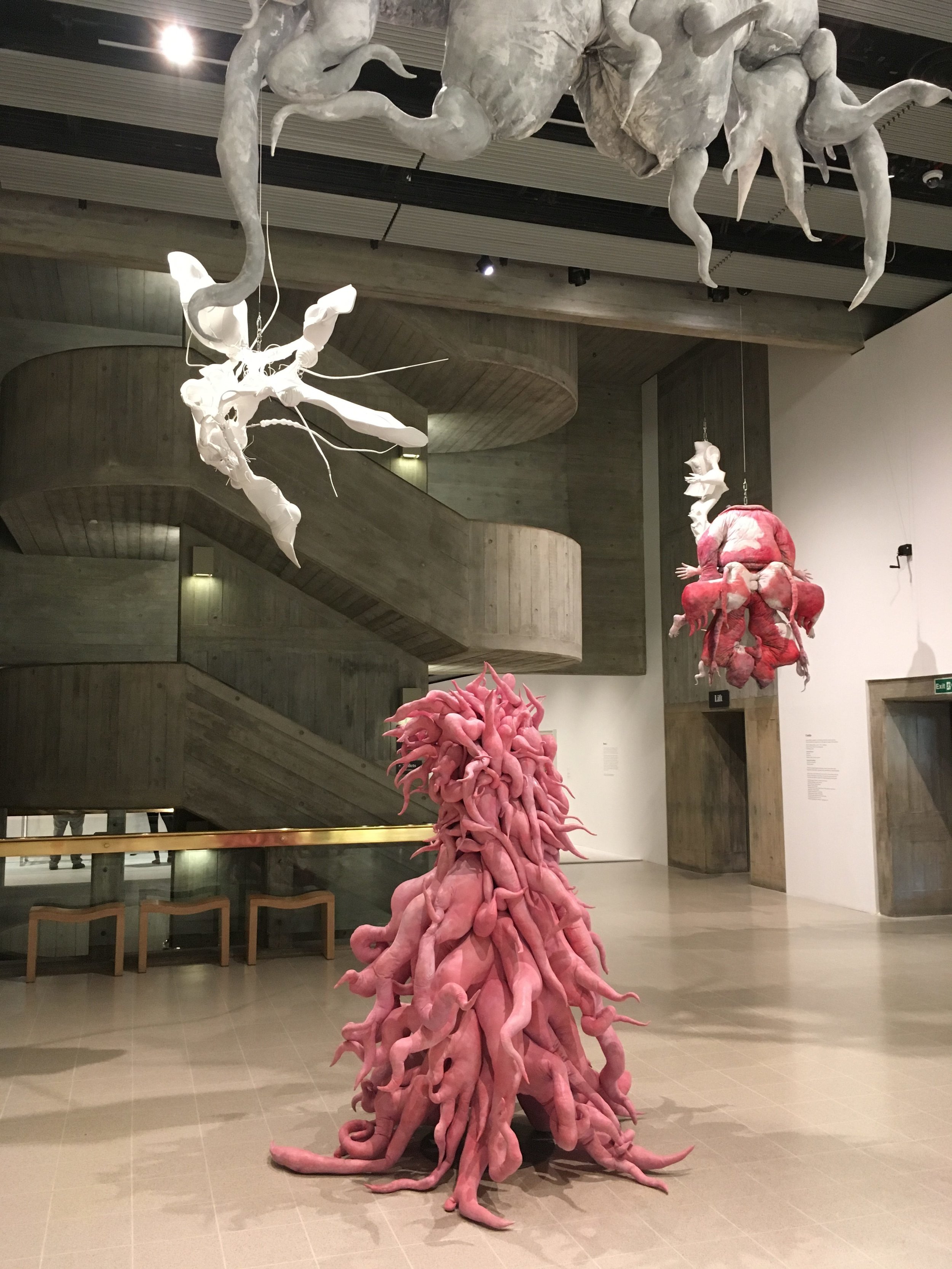

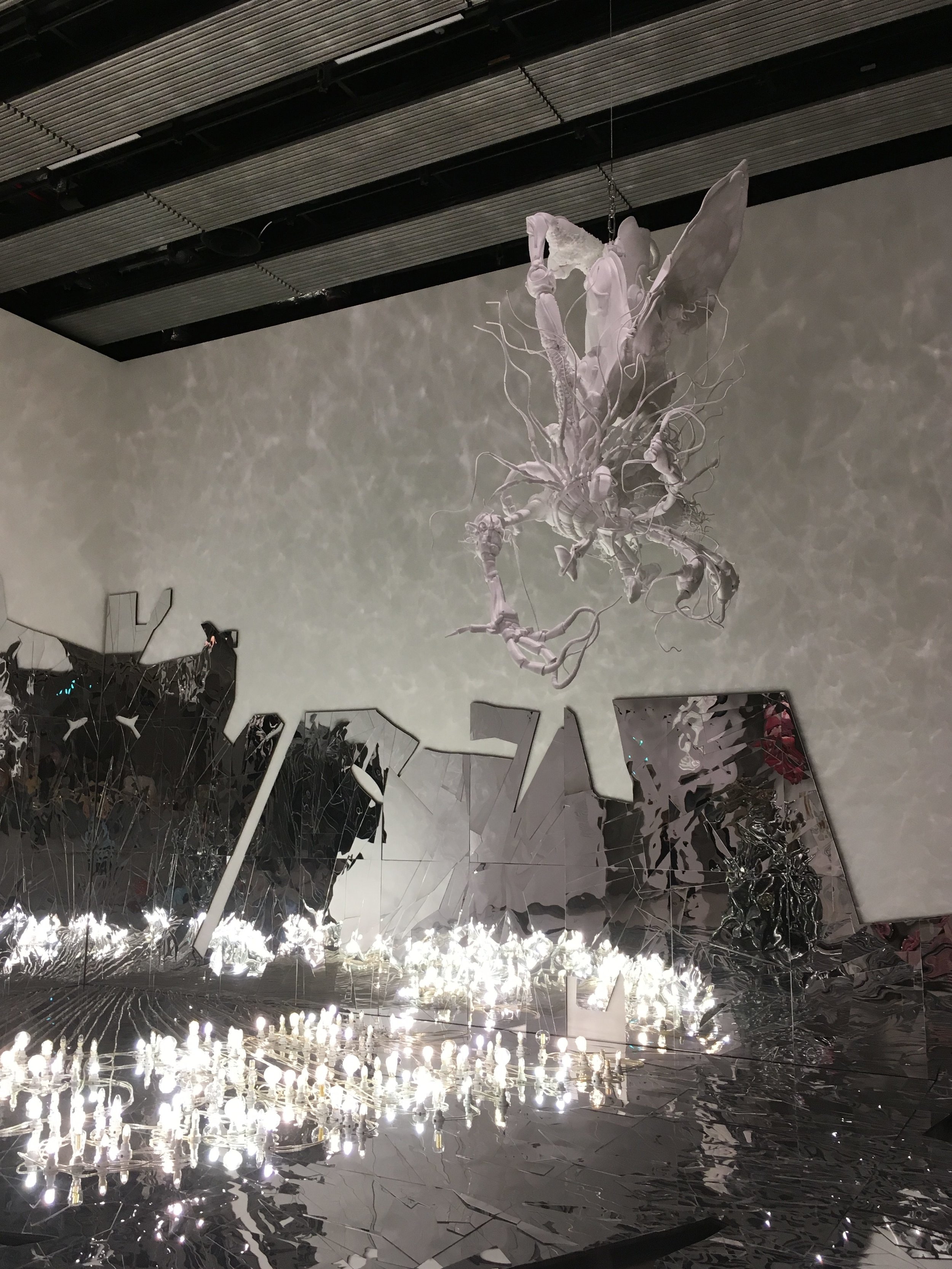



Theatrical hybrids and fictional landscapes combining industrial and organic materials fill the spaces in a dramatic show. Bul, from South Korea, confronts political persecution in her country, references disasters, questions cultural attitudes to the female body, and the pursuit of perfection through her re-appropriation of architecture and bodily forms. She explores our ‘fear and fascination with... the uncanny’. It was all fascinating, though I felt more affinity with her less glitzy other worldly soft sculptural monster works, especially ‘Monster Pink’, a reconstruction of a 1998 piece, and her stitched cocoons, made from various fabric. In Scale of Tongue (2017-18) a hidden fan created a gentle motion in the fabric.
Sarah Sze’s ‘Image in Debris’ installation at Victoria Miro is extraordinary. The darkened room is lit by a mesmerizing set of flickering moving images - luminescent blue satellite images of cities at night, reminiscent of bio-luminescent microorganisms, celestial imagery, a cheetah running in slow motion, the elements - layered on the wall and on small torn paper fragments supported by a delicate framework of thin rods. Drips of dried paint catch the light. Everyday objects, particularly office supplies, are placed around the installation. This is all accompanied by sounds of clunks, gentle whirring, drips, clicks. The magnitude of our universe becomes a mad invention.


Berlinde de Bruyckere’s sculpture ‘Quan’, 2010, in Bumped Bodies at the Whitechapel Gallery is a contorted, bruised human figure buried in a cushion, built up from several layers of wax over an iron structure. It makes one feel uncomfortable, even repulsed, but I was in captivated by the wax skin tones and powerful form she has created.


Closer to home, at Hauser & Wirth Somerset ‘Alexander Calder: From the Stony River to the Sky’, is a beautifully curated exhibition. His delicate balanced mobiles and stabiles and their shadows fully occupy the space. Conversations between artworks, recurring forms and his upcycled jewelry, some seen in UK for the first time, offer scope for new ideas.

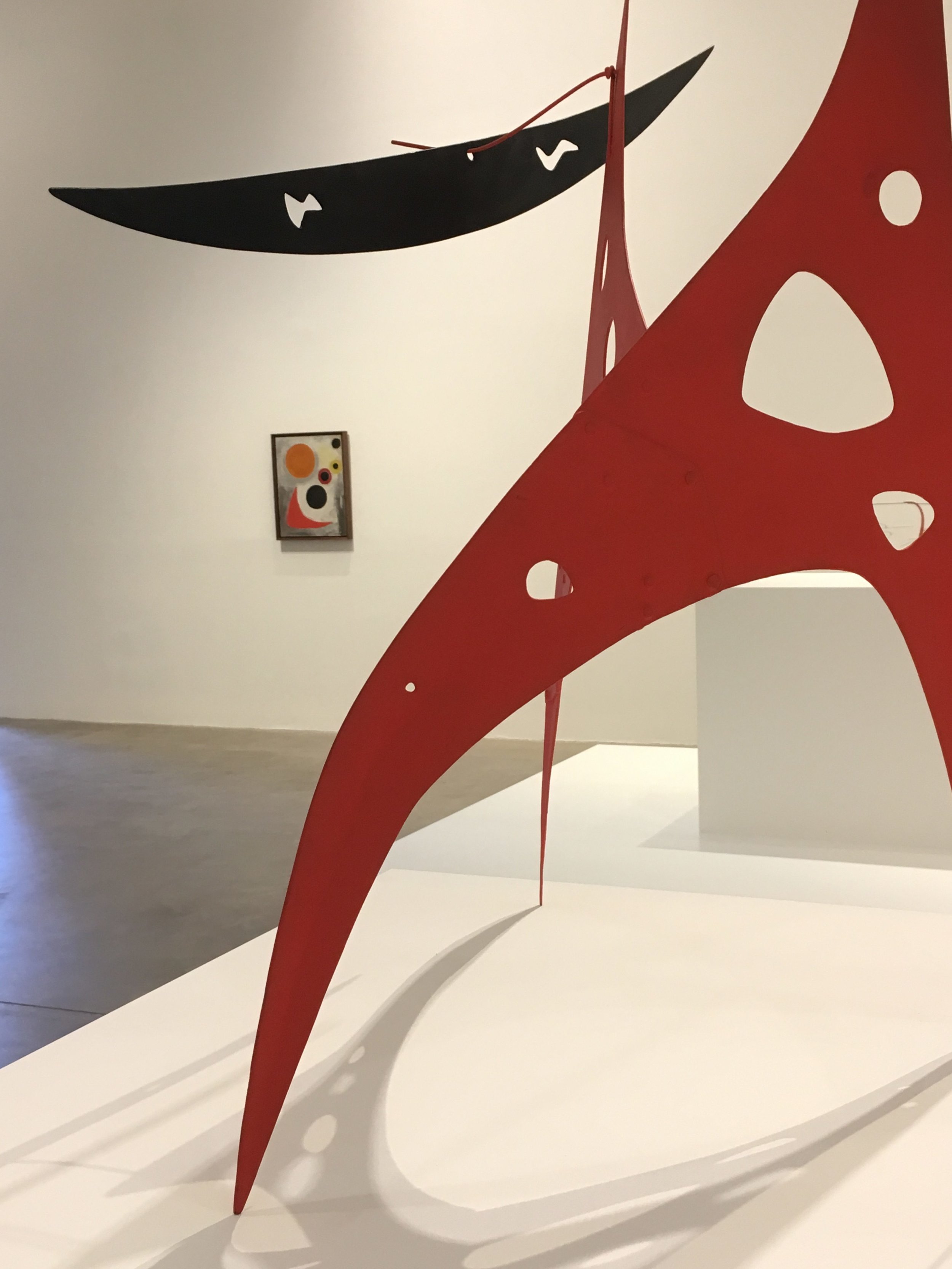



Participation in Manifesta12
I am very excited to have been selected to take part in a 10 day workshop in Palermo soon as part of Manifesta12, supported by Bath Spa University Enterprise Showcase Fund. The project ‘Ingruttati Palermo Planetary Garden’ research and fabrication workshop will involve a group of international artists, geographers, urban landscape architects and students who will be exploring the extraordinary hidden underground networks of the qanat waterways. Metaphorically similar to the mysterious powers of mycelium – also an underground system, which can stretch thousands of miles within one organism, the waterways reflect science’s recent discovery of vast reservoirs of water contained hundreds of miles beneath earth’s surface. This will be a wonderful opportunity for me to take part in the prestigious international art event, and to develop the aspect of my practice involving collaborative art projects in the community on an international level.
My website will be undergoing some changes in the next couple of months – look out for the rebrand!




